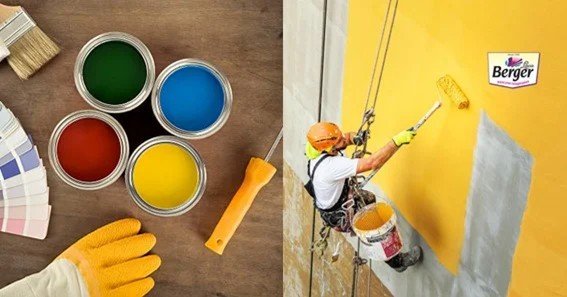Introduction
Berger Paints is one of the leading paint manufacturers in India, recognized for its quality products and innovative strategies. To understand how this industry giant operates, it’s essential to dive into the intricacies of the Berger Paints business model. From its revenue streams to its distribution network and supply chain, this article explores how Berger Paints has positioned itself as a competitive leader in the paint industry.
Key Components of Berger Paints Business Model
1. Berger Paints Revenue Streams
The primary source of revenue for Berger Paints comes from the sale of a wide variety of paints and coatings, catering to residential, industrial, and commercial sectors. Its extensive product line, ranging from decorative paints to protective coatings, contributes significantly to the company’s financial success. In addition, the company capitalizes on premium products and custom solutions, further boosting its revenue streams.
2. Operational Structure
The Berger Paints business model is heavily reliant on an efficient operational structure that optimizes the production, distribution, and marketing processes. This structure ensures that the company can scale production without compromising on quality. Berger Paints operates multiple manufacturing plants across India, each designed to handle the growing demand while minimizing costs through automation and modern technologies.
3. Distribution Network
One of the crucial pillars of the Berger Paints business model is its expansive and well-established distribution network. With a vast network of dealers, retailers, and distributors, Berger Paints ensures that its products are available even in remote areas. This broad reach is a key component of the company’s market dominance, allowing them to penetrate diverse customer segments.
4. Berger Paints Business Strategy
Berger Paints’ business strategy is focused on both product innovation and geographical expansion. By continuously introducing new products and keeping up with paint industry market trends, the company stays competitive. Additionally, they strategically target both domestic and international markets, tapping into the growth potential in emerging economies while solidifying their base in established regions.
5. Competitive Advantage
What sets Berger Paints apart is its strong competitive advantage. The company’s ability to innovate, coupled with its large-scale distribution and an efficient supply chain, gives it a significant edge over competitors. Their strong brand equity, combined with excellent customer service and effective marketing, further enhances their position in the market.
Berger Paints Supply Chain Management
An integral part of the Berger Paints business model is its supply chain management. The company ensures that raw materials are sourced efficiently, keeping production costs low while maintaining the high quality of its products. This lean supply chain enables Berger Paints to remain competitive and flexible in responding to market demands.
Growth Strategy of Berger Paints
Berger Paints employs a comprehensive growth strategy that focuses on product diversification and market penetration. They aim to expand their footprint in both urban and rural markets by leveraging their robust distribution network and maintaining strong relationships with dealers and retailers. Their focus on sustainability and eco-friendly products also positions them well for future growth as environmental consciousness rises among consumers.
Paint Manufacturing Process
Berger Paints follows a stringent paint manufacturing process, adhering to global standards of quality and sustainability. Their process is designed to minimize waste and reduce environmental impact while maintaining the durability and aesthetic appeal of their products. The company continually invests in research and development to improve their processes and products.
FAQ
- What are the main revenue streams for Berger Paints?
Berger Paints earns revenue primarily through the sale of decorative paints, industrial coatings, and specialty products catering to various sectors such as residential, commercial, and industrial. - How does Berger Paints maintain its competitive advantage?
Berger Paints maintains its competitive edge through constant innovation, a vast distribution network, excellent customer service, and effective supply chain management. - What is Berger Paints’ approach to supply chain management?
Berger Paints follows a lean supply chain model, ensuring efficient sourcing of raw materials and reducing production costs while maintaining high-quality standards. - How does Berger Paints’ business strategy differ from competitors?
Berger Paints focuses on both product innovation and market expansion, tapping into paint industry market trends and targeting diverse geographical regions to stay ahead of competitors. - What is the growth strategy of Berger Paints?
The growth strategy of Berger Paints includes expanding their reach in both domestic and international markets, launching innovative products, and focusing on sustainability.
Understanding the Berger Paints business model helps to see how this company remains a key player in the paint industry through its innovative strategies, robust operational structure, and efficient distribution network. The company’s focus on expanding its product offerings and geographical reach ensures its continued success and growth in a competitive marketplace.
Disclaimer: This article is for informational purposes only and should not be taken as financial advice. Always consult a financial advisor for investment decisions.










